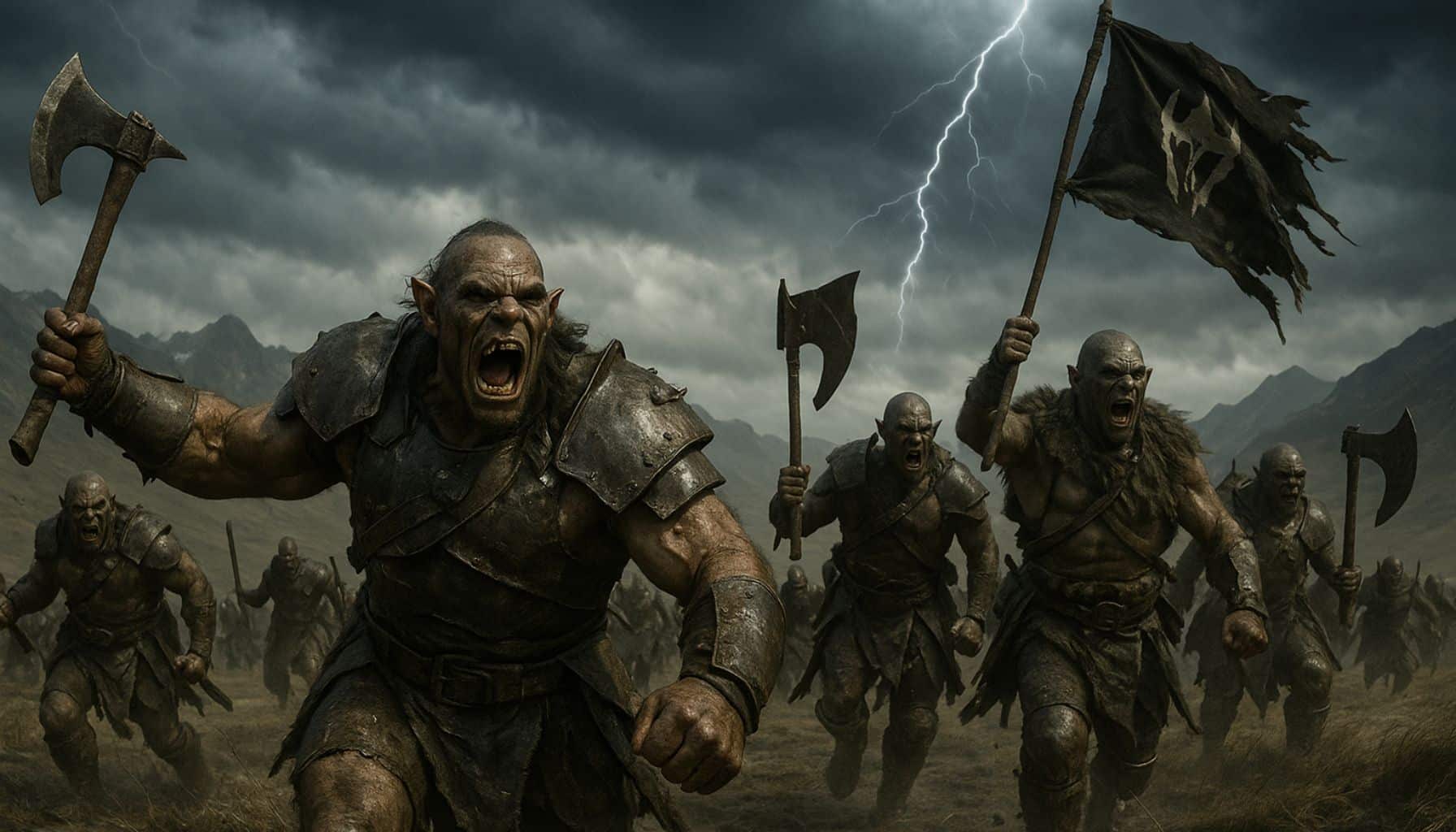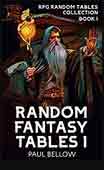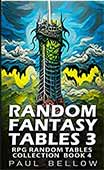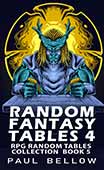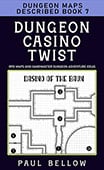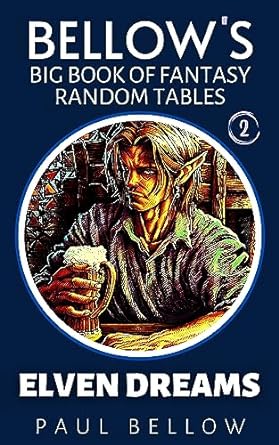The first stumbling steps of any Dungeon Master trace winding loops through the legendary bestiary of Dungeons & Dragons. A world teeming with monsters both infamous and obscure invites the fledgling storyteller to breathe life into myth and nightmare, yet it is the iconic creatures, etched deep into the game’s DNA, that best serve the inexperienced hand. These monsters do more than populate dungeons or block doors; they form a cultural backbone, recognizable to nearly anyone who has glanced at a rulebook or heard tales from the table. When the dice roll, and players face a goblin’s cackle or a dragon’s rumbling threat, they step into a shared legacy, one charged with expectation and brimming with possibility.
Discovering the value of classic D&D monsters goes beyond nostalgia. These creatures serve as powerful tools for teaching fundamental aspects of encounter design; pacing, balance, and narrative tension. Very few things clarify the basics of combat like a goblin’s simple attack routine or a skeleton’s resistance to piercing arrows. Their classic qualities streamline complexity, offering a clear, familiar entry point for new DMs learning to track hit points, run initiative, and maintain dramatic flow. A first session with familiar horrors allows the DM to focus on the beating heart of the adventure, not the technical scaffolding behind the curtain.
These monsters also ignite memorable stories, sparking the kind of sessions that linger in memory and crop up in retellings for years. An owlbear’s sudden charge through tangled undergrowth, or a gelatinous cube’s silent slide across a torchlit corridor, can set pulses racing regardless of experience. Iconic monsters have evolved alongside the game itself, reshaped across editions but always carrying the weight of legend. Players remember the first time they check a chest for a tongue lurking inside, or dash to drag an unconscious friend from an orc’s blade. The right AI monster generator can help!
Centered on Dungeons & Dragons 5th Edition, this list focuses on monsters that lower barriers to entry and reduce the stress of rule lookups. With straightforward stat blocks and narrative hooks, these adversaries allow new Dungeon Masters to build confidence, improvise boldly, and gain familiarity running sessions. Iconic creatures smooth rough edges, letting DMs stretch their wings without worrying about obscure abilities or niche mechanics. The choice of monsters defines not just the world, but the ease and excitement with which it unfolds.
The Essential Monsters for New Dungeon Masters
Selecting the right monsters for a beginner table is an act of curation as incisive as any dungeon design. The creatures gathered here were chosen for more than sheer popularity; each brings simplicity or versatility at its core. Some, like goblins and skeletons, have stat blocks so straightforward they practically run themselves. Others, such as the mimic or owlbear, provide a slightly more complex set of behaviors but offer unmistakable narrative bang for the buck. All embody foundational archetypes that every player expects to encounter at some stage. Their encounters pose questions about problem-solving, teamwork, and the weight of risk, all in manageable doses.
Cultural resonance also plays a role. The monsters in this list echo across fantasy literature, pop culture, and tabletop lore, instantly weaving even a brand-new campaign into the wider mythos of D&D. A party’s nervous laughter at a gelatinous cube, or wary glances at mundane chests in a mimic’s wake, draw on decades of collective storytelling. Each creature earns its place here not just for the ease of stat tracking, but for its power to kindle emotional responses, build confidence, and anchor the beginner’s experience in something larger than any single table.
Try my AI Tabletop RPG generators...and an extensive library of content!
Goblins
Little green goblins have snickered from the edges of fantasy stories far longer than D&D itself. Entering the game’s first published adventure, the goblin’s place as an archetypal enemy endures for good reason. They are small, scrappy, and sly, always lurking in groups just big enough to test a party’s nerves. Their mischief never tips into true malice—their goals rarely extend far beyond theft, survival, and making a nuisance of themselves. For a new DM, goblins offer an effortless combat experience. Their attacks are basic, their tactics easy to understand, and their cowardice in the face of determined resistance can steer an encounter through combat and negotiation alike.
Goblins are equally at home as punching bags for fledgling heroes or as comical pests in search of shiny distractions. Their tendency to operate in packs gives a DM an early lesson in initiative order, action economy, and the chaos that ensues when a fight involves more than two sides. Goblin lairs teach resource management: traps, narrow tunnels, and easily spooked captives. They push new DMs to consider not just how to run a single monster, but how to orchestrate a whole room full of troublemakers with competing agendas and quirky personalities.
- Goblin scouts leap from rocky outcrops, yipping war-cries, before tripping over their own feet and turning tail.
- A handful of goblins ambush the party from the rafters, pelting the party with rotten fruit and improvised projectiles.
- A goblin shaman holds a captured squirrel hostage, demanding a bag of candy in exchange for its “safe” return.
- Tricky goblins dig shallow pits beneath fallen leaves, hoping to snare unwary adventurers with a sharp clatter and a squeal of glee.
- A gang of goblins accidentally triggers their own alarm traps, sowing confusion as the party seizes the moment to turn the tables.
- Goblins engage in a game of “who can be the loudest,” drawing the party into a contest of wits and volume before a nearby ogre is awakened.
- A goblin chef offers to trade a “magic” stew for safe passage, brandishing a spoon as if it were a sacred relic.
- Goblin builders rig teetering stacks of crates and barrels, sending the party scrambling as the unlikely construction collapses.
- A goblin boss, perched on a rickety throne, delegates all danger to underlings while hurling insults from a safe distance.
- The party encounters goblin “artisans” selling crude trinkets, eager to haggle in exchange for rumors or minor equipment.
Managing goblin encounters rewards new DMs with practice balancing action economy. Their numbers often seem daunting but collapse in panic once things turn against them, creating natural learning moments about morale, negotiation, and pacing. The goblins’ tendency to cut and run teaches fledgling DMs how to weave uncertainty and movement into what might otherwise be a slogging fight. Instead of endless rounds of attacks, the goblins’ shifting tactics—whether encircling, splitting up, or fleeing—give shape to the rhythm of combat.
⚔️ Fantasy RPG Random Tables Books
Make life as a Gamemaster easier…
If you play Dungeons & Dragons, Pathfinder, or other fantasy RPGs, this
RPG random tables series
is packed with encounters, NPCs, treasure, and more. Available in eBook or print—either way, you’ll have a wealth of adventure ideas at your fingertips.
Goblins, in short, work as a crash course on running mobs: tracking multiple hit points, resolving simultaneous attacks, and keeping the battle moving. Their blend of mischief and menace teaches new DMs how to balance challenge with levity. By the end of a goblin-centric adventure, most beginner DMs find themselves already able to anticipate the flow of tougher fights, equipped with an instinctive feel for action and danger.
Skeletons
Bare bones clatter in the torchlight, the skeleton’s hollow gaze offering an instant serving of horror without much complication. Dungeon Masters reach for these archetypal undead in part because their motivations are transparent—advance, attack, obey the will of some unseen necromancer. Skeletons require little exposition. What you see is what you get: ancient warriors or unlucky peasants lashed together with dark magic, compelled to rise from narrow graves or dusty crypts. Running them demands almost no preparation, their vulnerabilities and resistances spelled out in bold lines.
In practical terms, skeletons make great adversaries for early dungeon crawls. Their stats are clean and concise, with clear vulnerabilities (bludgeoning) and common resistances (poison or slashing). Skeletons don’t banter or negotiate. They test the party’s retention of the basic rules—they do not need to be coddled or cajoled. New DMs grasp the rhythm of combat quickly, while players savor the feeling of shattering bone with a warhammer or outmaneuvering the clumsy undead in crumbling passageways.
| Scenario | Setting | Unique Twist |
|---|---|---|
| Guarding an ancient tomb | Dusty mausoleum | Skeletal remains animate only on sacred nights |
| Ambush beneath moonlight | Forgotten graveyard | Skeletons wear rusted ceremonial armor |
| Patrolling sunken catacombs | Underground crypt | Bones stitched with shimmering spectral thread |
| Trapped in cursed statues | Noble’s estate | Must solve a riddle to free (or banish) them |
Crucially, skeletons introduce the concept of damage resistances and vulnerabilities without bogging down the game in technicalities. Hitting a skeleton with a sword and watching it shrug off the blow, then switching to a mace and seeing it crumble, carves the logic of the rules into memory. The party must adapt, switching tactics or swapping weapons, learning that combat is not always about brute strength. The DM, too, picks up strategies for hinting at enemy weaknesses, nudging the party toward clever play without giving the game away.
Skeletons also serve as a springboard for teaching basic strategy. Fights with the undead can reward those who target spellcasters, prioritize threats, or seek out environmental advantages (collapsing balconies, flickering torch sconces). After a few rounds of battered bones and snapping jaws, both DM and players gain the confidence to tackle more complicated encounters. Skeletons establish a foundational rhythm to combat—the unspeaking, relentless advance of death—and allow the DM to focus on atmosphere, pacing, and dramatic tension.

Owlbear
Nothing in the bestiary blends the familiar and the absurd quite like the owlbear. All feathers and fur, with the predatory might of a bear and the fierce, unblinking eyes of an owl, this monster demands attention simply by existing. The first sight of it crashing through undergrowth—with no warning but the snap of branches and the low, rumbling hoot—etches itself into party memory. New Dungeon Masters quickly discover the appeal: here stands a beastly foe with the simple combat motivations of an animal, layered atop the unpredictable energy of magical evolution.
The owlbear excels at delivering drama. Its powerful attacks threaten even relatively sturdy parties, while its territorial instincts justify any sort of sudden, brutal ambush. Owlbears aren’t evil; they’re simply hungry, scared, or furious at intruders. For a DM, running an owlbear means balancing its aggression with a hint of pathos, especially if the encounter involves cubs or a threatened nest. Players walk away with tales of near misses and lucky blows, learning the thrill of risk and the thrill of victory or escape.
- The party stumbles into a den during nesting season, triggering a defensive rage in a brooding owlbear parent.
- An owlbear marks its territory by smashing trees, and the party’s presence provokes a dramatic display of strength before battle even starts.
- Party members see only glowing eyes in the darkness before an owlbear launches an ambush from the shadows.
- Players spot a half-eaten deer tangled in vines—the owlbear circles warily, assessing risk before attacking.
- The party interrupts a dramatic mating dance, distracting two confused owlbears from their complicated rivalry.
- A wounded owlbear defends a cave mouth, battered but still deadly, forcing the party to consider alternatives to outright combat.
- The party hears the distinctive “hooting roar” of an owlbear before they spot it, giving a split-second for hasty plans or panicked flight.
- A group of goblins tries to trap an owlbear for its magical feathers, with the adventurers caught between monster and mischief.
- Owlbear cubs wander into camp at night, searching for food, while their parent looms in the darkness.
- The party comes across an owlbear with unusual plumage, hunted by collectors eager for its rare feathers.
Owlbear encounters force new DMs to weigh direct threat against environmental storytelling. The beast might fight to the death or flee if wounded, depending on circumstance. Some players will attack on sight, others may attempt to drive the creature away or sidestep violence entirely. Running these encounters hammers home the importance of improvising responses and reading the table’s mood. The DM learns to use terrain, describe movement, and pace the battle between explosive aggression and moments of tense stillness.
For new Dungeon Masters, owlbears transform a fight into a set piece. Their distinctive look and animal motivations provide hooks for negotiation, non-lethal solutions, and spur-of-the-moment creativity. By the end, the party remembers not just a hit point total but a living, breathing world with apex predators and ancient mysteries.

Gelatinous Cube
Moving nearly unseen through forgotten corridors, the gelatinous cube occupies a special place in the D&D imagination. It is an improbable menace: slow, huge, and nearly invisible when lurking in the darkness. Yet nothing matches the visceral thrill of a player’s first realization that the corridor itself is closing in. The cube’s classic “clean corridor” trick—consuming anything organic in its path, leaving only gleaming bones—creates instant tension and horror. For new DMs, the cube is a gift; its motivations are simple, its mechanics straightforward, and its presence unmistakably iconic.
By using gelatinous cubes, Dungeon Masters can teach players to respect the environment. The monster’s stealth comes entirely from its mundane surroundings; there are no complex spells or elaborate strategies behind its threat. Adventurers learn to peer into the shadows, prod puddles, and question every mundane description. For the DM, running the cube highlights the value of foreshadowing and environmental details, rewarding careful observation over brute force.
⚔️ Fantasy RPG Random Tables Books
Make life as a Gamemaster easier…
If you play Dungeons & Dragons, Pathfinder, or other fantasy RPGs, this
RPG random tables series
is packed with encounters, NPCs, treasure, and more. Available in eBook or print—either way, you’ll have a wealth of adventure ideas at your fingertips.
- A cube waits in utter darkness, triggered only when the party carries a light source close.
- The cube blocks a narrow corridor, forcing players to choose between combat and risky detour.
- Treasure glimmers suspended in the cube’s semi-translucent depths, tempting greed but threatening swift digestion.
- The party’s retreat cuts off as a cube oozes from a hidden drain or crumbling wall.
- Dropped weapons, armor, and a pile of bones float in a cube, providing early warning for the observant.
- A cube lurches into view down a sloping hallway, silently rolling toward unaware explorers.
- A cunning trapdoor drops party members directly into a gelatinous cube’s “pit,” challenging quick reaction or clever magic.
- The party encounters rival adventurers trapped inside the cube, faces contorted in agony—or preserved in eerie stillness.
- Environmental hazards force the party to fight the cube in ankle-deep water or amidst crumbling masonry.
- The cube moves between two rooms, briefly blocking one escape route and then the other, chasing adventurers through a maze of halls.
Gelatinous cubes introduce lessons in environmental awareness. Combat alone rarely turns the tide; players must notice the cubes before stumbling blindly into danger. The DM can describe subtle hints—the air’s acrid taste, the echo muffled by damp slime, or the faint shimmer along stone walls. Parties who learn to probe and prod their surroundings are rewarded with safety, while those who rush forward face hungry dissolution.
More than simply a trap or foe, the gelatinous cube embodies the core of dungeon crawling: menace lurking just out of sight, requiring wit and caution. In handling these encounters, new DMs quickly recognize the value of environmental cues, creative player solutions, and the importance of communication between table and world.
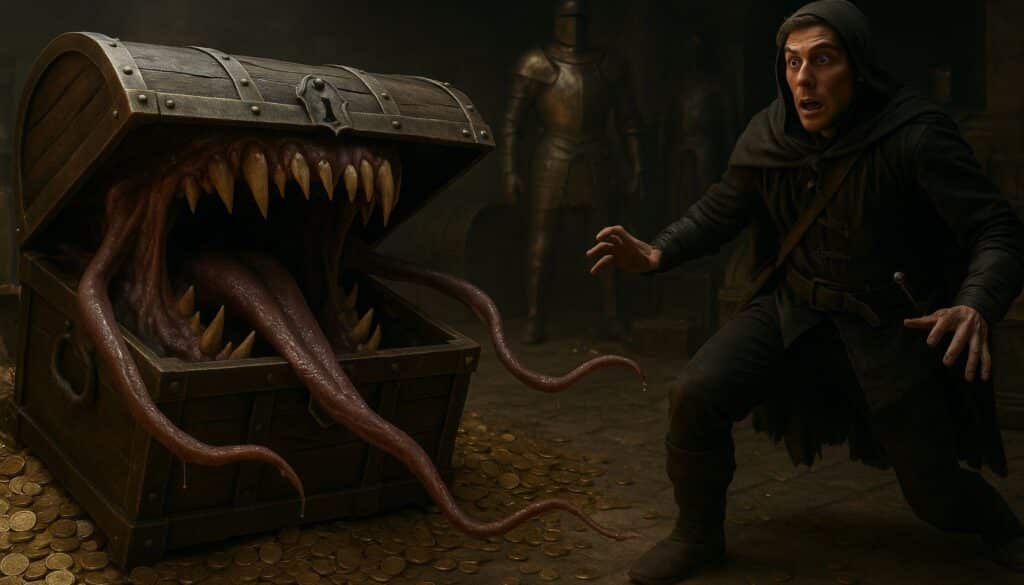
Mimic
No monster in the D&D pantheon mines paranoia and humor quite like the mimic. At first glance, nothing more than a chest, a door, or some innocent bit of dungeon furnishing. Then, with a sticky snap and a slither of tongue, the room itself bites back. For the Dungeon Master, the mimic’s shapeshifting is a delight—there are no rules for what it might become, only the DM’s own creativity and the party’s suspicious glances. The mimic rewards caution, investigation, and a willingness to laugh in the face of danger.
Running encounter with a mimic is often a highlight of any early campaign. The surprise never grows old, no matter how jaded the players. Every object becomes a potential threat, infusing even empty corridors with tension. For new DMs, the mimic’s stat block requires little management, but the narrative possibilities are practically endless. The trick is not just in what it can become, but how and when it strikes, retraining players to look before they leap.
| Object | Scenario | Clue to True Nature |
|---|---|---|
| Treasure chest | Dungeon hoard | Faint trace of glistening saliva |
| Wooden door | Blocking passage | Unusual, sticky residue on handle |
| Weapon rack | Armory cache | Weapons glued in place, slightly vibrating |
| Cabinet | Wizard’s study | Hinge groans when touched, moves subtly |
| Throne | Empty hall | Seat unusually warm to the touch |
| Table | Abandoned tavern | Plates and cups fused, awkwardly placed |
| Barrel | Cellar or dock | Weight shifts when approached |
| Statue | Manor or crypt | Eyes glimmer with unnatural moisture |
| Bed | Hostel or safehouse | Sheet rumples on its own, musty stench |
| Crate | Warehouse | A corner rhythmically expands and contracts |
Running a mimic teaches new DMs to reward investigation and encourage curiosity. The party that checks every chest, prods every barrel, and asks for details may seem paranoid—but that paranoia becomes part of the fun. Mimics serve as perfect narrative speedbumps, turning the expected into the extraordinary while providing stakes ranging from slapstick to deadly.
Mimics cement themselves in memory as both jump scares and punchlines. Players remember every encounter as an object lesson in suspicion and creativity. For the Dungeon Master, the mimic’s adaptability opens doors to endless storytelling, laying the groundwork for future tricks, traps, and twists.
Bugbear
Larger and hairier than their goblin kin, bugbears loom in the darkness, silent until the moment of violence. Their broad frames and cunning eyes mark them as true predators—often serving as the muscle behind goblin raiding parties or the lone threat prowling a moonlit ruin. Early adventures benefit from the bugbear’s brute strength and natural stealth. New DMs learn to handle foes that pack a punch but still present clear weaknesses and motivations.
Bugbears show how a monster can fear and respect strength, treating adventurers as threats or prey depending on circumstance. They reward parties that plan, paying attention to ambush points and choke-holds. Bugbears can think, can parley, but they rarely back down until they are truly outmatched. Their presence turns a simple skirmish into a cat-and-mouse game, teaching DMs that not every enemy fights to the death, but nearly every enemy prefers to dictate the terms of battle.
Try my AI Tabletop RPG generators...and an extensive library of content!
- Bugbear leaders direct goblin minions from the shadows, striking only when weakness shows.
- A bugbear bides its time, eavesdropping on the party before crashing into camp at twilight.
- The bugbear sets elaborate deadfall traps, hoping to incapacitate stronger foes before closing in.
- Goblins lure adventurers into an ambush, only for a hidden bugbear bruiser to tip the scales at a critical moment.
- The bugbear kidnaps townsfolk, dragging them to a remote lair for ransom or leverage.
- Bugbear spies probe defenses, testing for weaknesses, before unleashing a coordinated strike.
- A bugbear pretends to be the mindless muscle, while cunningly orchestrating a petty feud between rival goblin clans.
- The bugbear and party must cooperate temporarily to escape a greater threat, setting the stage for betrayal or grudging respect.
- The bugbear aligns with a dark fey or necromancer, acting as their enforcer in a multi-layered lair.
- Wounded and desperate, the bugbear seeks mercy or vengeance, forcing the party to navigate moral ground.
Bugbears offer an early taste of heavier tactics and higher stakes. They fight smart, leveraging reach and surprise, coaxing the DM and party alike to consider movement, readiness, and ambush. Parties that rely solely on brute force quickly learn the cost of ignoring stealth or spreading out. Encounters with bugbears can also highlight negotiation, intimidation, or the value of parley—forces that, in the right circumstances, can turn enemies into unlikely allies or more cunning foes.
For the novice DM, bugbears act as living lessons in both combat nuance and story development. Their savage strength contrasted with their subtle cunning bridges the gap between basic goblin fights and more lethal threats. New DMs gain the confidence to run “mini-boss” encounters, managing both narrative tension and tactical layers without getting lost in rules minutiae.
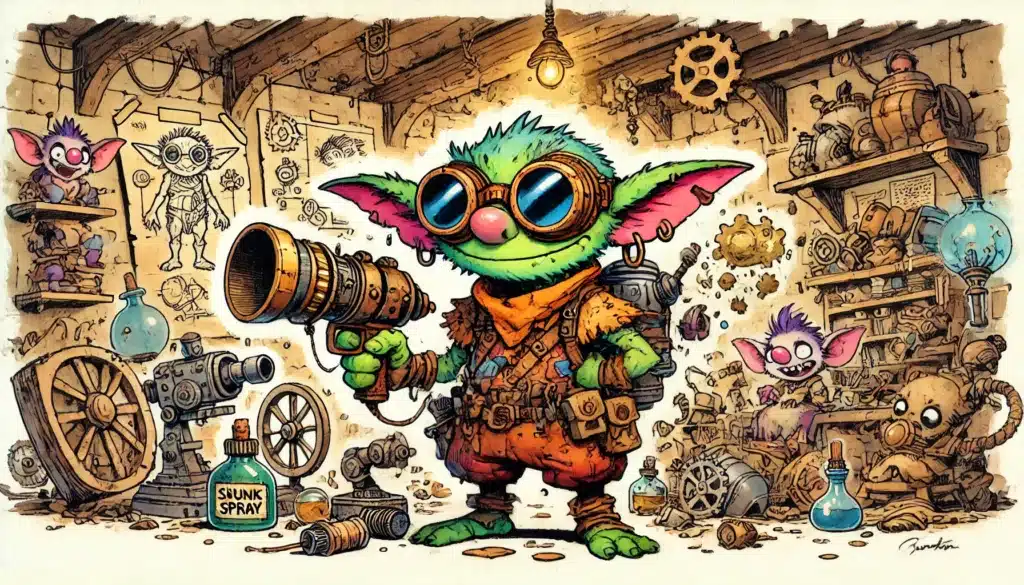
Kobolds
Kobolds bring cunning and chaos at a scale that flatters early campaigns. Small, scaly, and relentlessly inventive, they construct elaborate traps, undermine dungeons, and outwit their prey (or so they believe). Kobolds appeal to new Dungeon Masters for their blend of humor, resourcefulness, and low threat level—perfect fodder for creative encounters without overwhelming complexity. Their weakness in direct combat encourages parties to plan, cooperate, and outthink their foes.
Kobold lairs are riddled with hazards: swinging logs, tripwires, pits lined with caltrops, or chemical flasks rigged to explode. While kobolds rarely win by force, their confidence in traps and trickery pushes DMs and players into a chess match of wits. Kobolds are clever, working in packs, and they know every inch of their warren better than any invader ever could. They can serve as comic relief or desperate defenders, depending on the tone of the adventure.
- Kobolds dig camouflaged pit traps lined with scavenged spikes, camouflaged with moss and debris.
- The party faces a gauntlet of swinging log traps, each baited with glimmering treasure to lure the unwary.
- Alarm bells ring through the tunnels as kobolds retreat, drawing the party into a twisting labyrinth.
- A wall collapses, unleashing a cascade of rolling boulders, driven by panicking kobolds hoping to flatten intruders.
- Kobolds toss jars of wasps or fire ants, sowing panic and confusion during a running battle.
- Poisoned darts shoot from the darkness when the party treads on inscribed stones, launched by hidden teams.
- Trapped doors release clouds of choking dust, forcing party members to adapt or fall back.
- Kobolds swarm with nets, binding and tripping foes before launching a quick retreat.
- Waterlogged corridors conceal slippery logs or hinged floors, threatening to dump adventurers into sewage or worse.
- A charismatic kobold “trap architect” issues boasts and threats from a hidden intercom or peephole.
Encounters with kobolds provide valuable lessons in teamwork and strategy. They force players to slow down, test for traps, and think before charging in. Each encounter nudges the party toward creative solutions and careful observation, teaching habits that serve well beyond low-level play.
For Dungeon Masters, kobolds act as a test bed for environmental hazards, simple puzzles, and running swarms of creatures. They let the DM experiment with pacing, challenge, and improvisation, all within the forgiving framework of easily defeated but never boring foes.

Orcs
Orcs emerge from the shadows of myth as the quintessential brutes: green-skinned, tusked, and driven by the fires of conquest and battle. They provide a reliable yardstick for direct challenge—tough enough to test beginner parties, clear in motivation, and impossible to mistake for anything but what they are. For new Dungeon Masters, orcs offer straightforward combat, the thrill of battlefield tactics, and opportunities to dip a toe into the rich pool of D&D’s martial cultures.
Orc encounters favor decisive action over clever trickery. The creatures charge headlong into battle, wielding massive weapons and howling oaths to distant gods. Yet within their ranks, orcs display discipline, chain of command, and the brutal logic of survival. New DMs can introduce sub-bosses, skirmishers, and the classic orc war chief, using even the simplest encounter to hint at a culture that is more than mere savagery. Parties learn the meaning of morale, overwhelming force, and the risk of overconfidence.
- Orc warriors charge the frontline, while archers in the rear volley arrows from makeshift barricades.
- An orc war chief rallies injured fighters, leading a last-ditch stand against encroaching adventurers.
- The party stumbles upon an orcish camp mid-feast, giving rise to a chaotic melee interrupted by wild celebrations.
- Orc berserkers ignore wounds, pressing the attack with reckless devotion to their war god.
- Young orcs test themselves in ritual one-on-one combat, daring intruders to join their challenge.
- The orc shaman attempts to sway the tide, summoning primal spirits or bolstering allies with chants.
- A wounded orc bargains for mercy, revealing a map or secret in exchange for its life.
- Orcs stage a raid on a merchant caravan, letting the party choose between direct intervention or a stealthy rescue.
- An orc “scout” lures the party into an ambush, retreating into dense woods to draw adventurers away from safety.
- The party faces off against an orc veteran whose cunning tactics belie his battered armor and gruff speech.
Running orc encounters gives new DMs practice with battlefield positioning, morale, and the rush of melee. Their aggression makes for fast-moving skirmishes, perfect for shaking off early-game hesitation and letting the dice fall where they may. At the same time, orcs reward parties that manage positioning and target priority—choosing when to engage, hold a choke point, or fall back.
For the DM, orcs teach the rhythm of direct conflict and the value of pacing battle scenes. Every clash with these warriors reinforces clarity, urgency, and the stakes of combat—foundations of narrative drive that anchor campaigns for years to come.

Troll
The sight of a gangly troll, skin shimmering with unnatural regeneration, strikes both awe and calculation into the hearts of new players. Trolls teach the essential lesson that not all monsters die easily—some, in fact, refuse to stay dead unless the right tools are brought to bear. The troll’s iconic ability to heal from any wound (except fire or acid) challenges fledgling Dungeon Masters to run more nuanced combat and forces players to adapt on the fly.
A troll encounter is a masterclass in escalation. Players may hack off limbs, watch them regrow, and scramble for ways to finish the job. The DM learns to track conditions, apply ongoing effects, and describe evolving threats. Trolls rarely fight for glory; their hunger and cunning lead them to ambush lone targets, retreat when cornered, or leverage the terrain for an advantage. This makes every troll fight a puzzle as well as a brawl.
- Troll emerges from a muddy riverbank, regenerating wounds even as arrows thud into muck.
- The troll flees into a burning building, forcing the party to weigh pursuit against raging fire.
- Ambushed by a trio of trolls, the party realizes only one is real—the other two are illusions conjured by a hidden mage.
Troll encounters force players and DMs alike to consider enemy strengths and weaknesses. Standard attacks may slow, but rarely stop, the relentless advance. Parties must experiment with torches, alchemist’s fire, or scavenged acid flasks—anything to outpace the troll’s monstrous healing. For the DM, tracking ongoing effects and conditions transforms combat from routine to dynamic, rewarding careful management and creative narration.
Trolls also drive resource management; spells, potions, and tools become precious commodities in the face of immortal flesh. New DMs who handle trolls learn to pace encounters, hint at necessary clues, and reward ingenuity among their players. These lessons become cornerstones for more advanced campaigns, where every creature, from demon lord to dragon, has a trick up its sleeve.
Dragon Wyrmling
Dragons sit at the apex of D&D’s ecosystem, yet new Dungeon Masters need not fear their legendary status. The wyrmling, a juvenile dragon bristling with ambition and magical power, offers all the flavor of its adult kin without overwhelming complexity. A dragon wyrmling encounter marries manageable challenge rating with awe-inspiring spectacle—the flicker of scales, the heat of a fresh breath weapon, and the weight of myth at the table.
⚔️ Fantasy RPG Random Tables Books
Make life as a Gamemaster easier…
If you play Dungeons & Dragons, Pathfinder, or other fantasy RPGs, this
RPG random tables series
is packed with encounters, NPCs, treasure, and more. Available in eBook or print—either way, you’ll have a wealth of adventure ideas at your fingertips.
For the DM, wyrmlings provide a crash course in running legendary creatures. Players meet their first true test of tactics, negotiation, and preparation. Some parties will bluster or flee, others will try their luck in battle, and a few will attempt to strike a deal. Each encounter stretches the DM’s improvisational skills, blending combat, roleplaying, and the hint of greater destiny just over the horizon. Running a wyrmling is the perfect showcase for what D&D can deliver: danger, wonder, and the thrill of the unknown.
| Color | Personality Trait | Memorable Lair Features |
|---|---|---|
| Red | Arrogant and territorial | Lava flows, magma pools, smoked bones |
| Blue | Cunning and proud | Buried treasures, shifting sand pits |
| Green | Deceptive and curious | Overgrown roots, poisonous fog, hidden traps |
| Black | Cruel and brooding | Flooded caverns, acid-stained walls |
| White | Feral and spiteful | Ice pillars, frozen prey, biting wind |
| Bronze | Playful yet judgmental | Rusting shipwrecks, tidal pools, shiny debris |
| Copper | Jokester, never serious | Winding mazes, illusionary walls |
| Brass | Chatty, loves riddles | Sunlit entrances, echoing chambers |
| Silver | Noble, protective | Cloud-laced heights, ancient banners |
| Gold | Wise and aloof | Gilded halls, mirrored surfaces |
Dragon wyrmlings provide a touchstone for introducing epic stakes, ancient mysteries, and ethical quandaries. Do the adventurers slay the beast, bargain for knowledge, or walk away in awe? For the new DM, each choice offers lessons in improvisation, pacing, and the balance of story and system.
Running a dragon encounter, even at the wyrmling level, redefines the campaign. The party never forgets the brush with legend—the weight of ancestry in every breath, the shimmer of untold secrets, the first hints of the world’s deeper mysteries. For DMs, wyrmlings are a promise: your world can become anything, and your table can rise to meet the challenges of myth.

Final Thoughts
The monsters in this list knit together the learning curve of new Dungeon Masters. Each creature, from the grubby goblin to the wily wyrmling, becomes more than a stat block: they are milestones on the path to mastery. These encounters invite experimentation, foster teamwork, and build confidence—lessons that linger across years of gaming. For the fledgling DM, such monsters are not a restraint but a springboard, opening up a world of possibility while anchoring each session in the traditions of the game.
At the heart of every classic monster stands a promise. The next encounter will be as memorable as the last; that the world is brimming with both danger and delight. Even as rules and systems evolve, these creatures endure—easier to run, richer in story, and always ready to teach. The DM who knows how to pace a goblin ambush or handle an owlbear’s ire finds themselves equipped for adventures of any scale.
For the players, the threat of a cube in the corridor or the glint of a mimic’s tongue transforms their approach to the game. Classic monsters lay a foundation of shared storytelling, layering each table’s lore atop the bedrock of countless campaigns. Confidence, creativity, and camaraderie grow from the challenge posed by these iconic foes.
Stepping into the DM’s shoes, armed with an iconic bestiary, is not just about mechanical playability. It is about conjuring worlds—where a skeleton’s advance draws a hush, a dragon’s shadow falls across camp, and even the click of a treasure chest can set hearts racing. The legacy of D&D lives in these monsters, waiting for each new DM to take their turn behind the screen.

